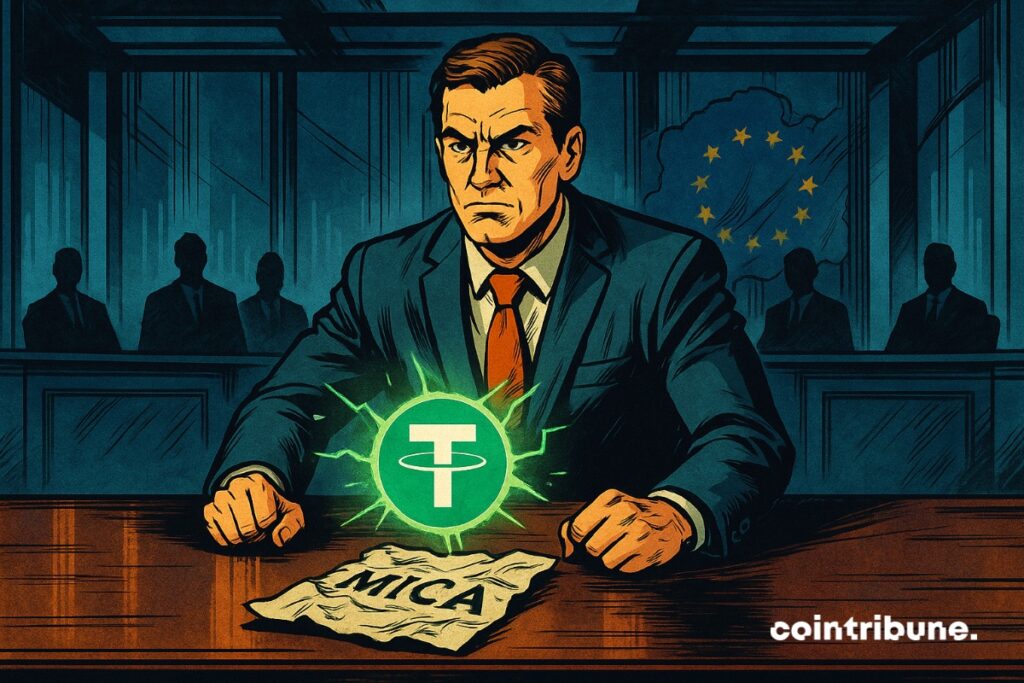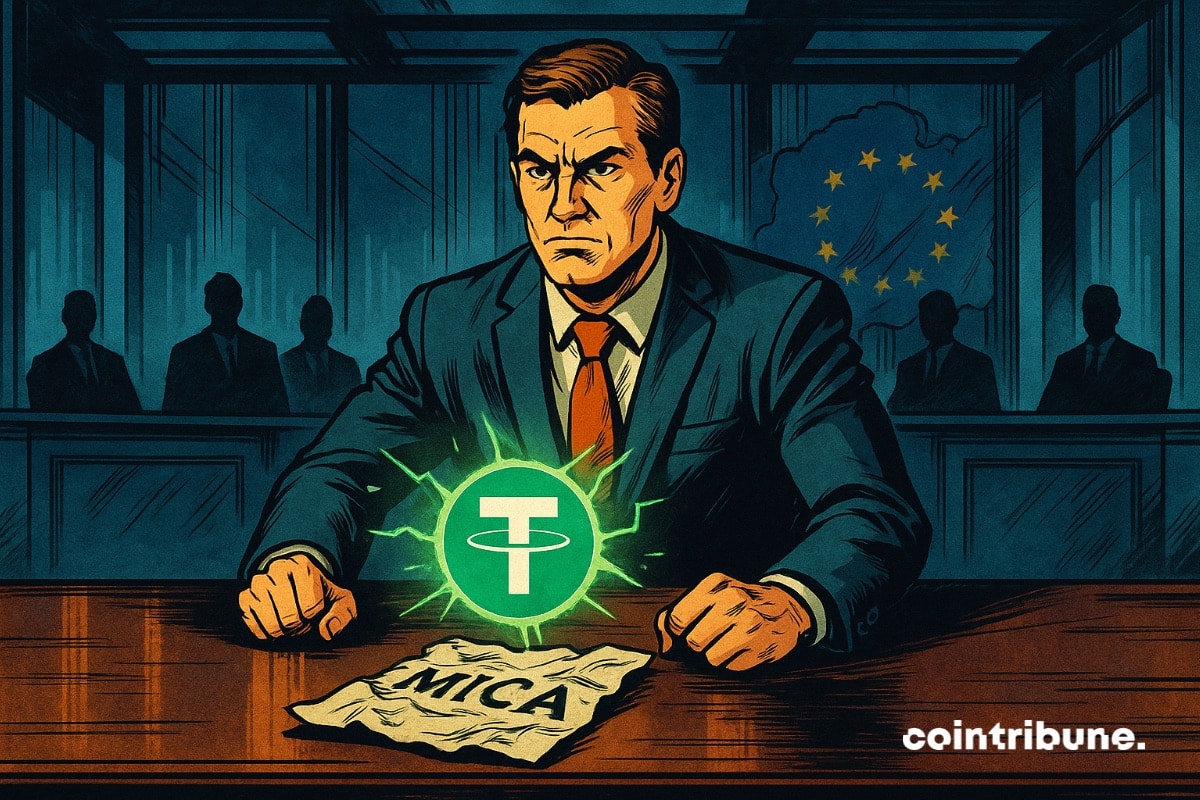Tether throws a sidewalk to the European Regulatory Pond: its CEO categorically refuses to submit USDT to the mica frame. Decisions that could disrupt the Stablecoin market in Europe, weakening crypto exchange and emphasize the frontal opposition between global regulation and innovation.

In short
- Tether, CEO of USDT, refuses to register USDT according to the European regulations.
- Tethe, CEO of Tethe, judges the requirements of the mica dangerous to banks and unlike financial freedom.
- The EU considers USDT a threat to its monetary sovereignty against the dollar.
- Several platforms remove USDT in Europe and redistribute cards on the Stablecoins market.
A control framework that is too restrictive than pilgrimages
In a courageous gesture, the CEO of Tether, Paolo Ardoino, confirmed that the company would not try to comply with SIDA regulations for its Stabnecoin USDT, despite the entry into force of the new crypto rules in Europe. At the Token2049 summit in Dubai condemned the framework ” hazardous For Stablecoins and to say that he could weaken European banks.
According to Tether leader, the requirements of the mica – such as the obligation to place 60 % of stablecoin reserves in banking deposits secured in the EU – represent the main risks for the European banking system. ” I need to protect our 400 million users around the world, not just Europeans “He said. He accuses the European Central Bank of using hearing as a lever to promote digital euros and restrictions on the financial freedom of citizens.
Towards marginalizing in Europe?
Europe is worried about the growing influence of Tether because he hides a geopolitical threat behind his stablecoin: it is supported by the US dollar and strengthens the green rear rear in the heart of the euro area. By letting USDT freely circulating, Brussels is afraid of loss of monetary sovereignty, increased dependencies in the United States and weakening the digital euro project.
Mica then becomes a regulatory war that limits the expansion of an asset considered a weapon of financial influence. Crypto platforms such as Kraken and Binance responded by removing several stablecoins, including USDT to remain in line with this regulation. This could slow down the use of the harness, the most capitalized stablecoin in the world in Europe, which forced the actors to turn to another regulated crypto such as Bitcoin or Ethereum.
Tether’s refusal to accept mica illustrates the clearing between European regulation and the giants of the crypto. This decision could disrupt the balance of stablecoin in the EU, emphasize the regulatory fracture and push the platforms to review their strategy in the face of the market in full reconfiguration.
Maximize your Cointribne experience with our “Read to Earn” program! For each article you read, get points and approach exclusive rewards. Sign up now and start to accumulate benefits.
The world is evolving and adaptation is the best weapon that survives in this undulating universe. I am interested in everything about blockchain and its derivatives. To share my experience and promote an area that fascinates me, nothing better than writing informative and relaxed articles simultaneously.
Renunciation
The words and opinions expressed in this article are involved only by their author and should not be considered investment counseling. Do your own research before any investment decision.






